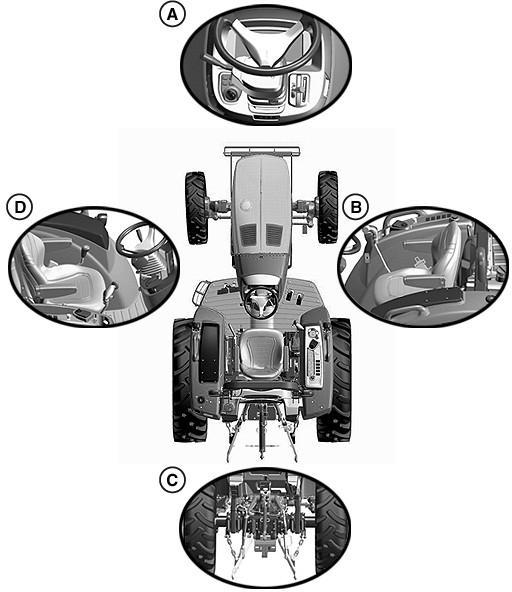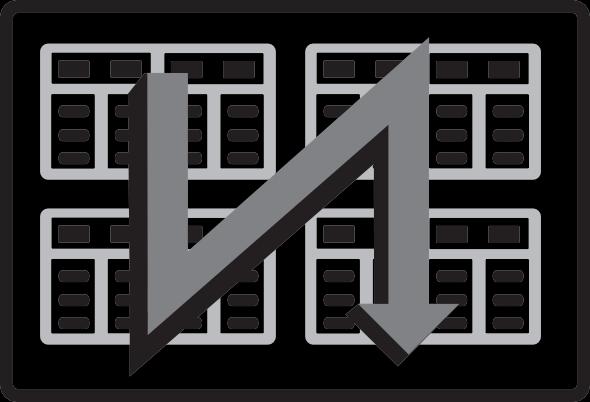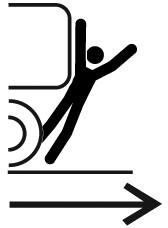4044M, 4044R, 4052M, 4052R, 4066M, 4066R, 4052M and 4066M Heavy Duty Tractors Operator’s Manual (North America)

DOWNLOAD OPERATOR'S MANUAL
4044M, 4044R, 4052M, 4052R, 4066M, 4066R, 4052M and 4066M Heavy Duty Tractors Operator’s Manual (North America) OMTR112287 ISSUE I0 (ENGLISH)












CALIFORNIA
Proposition 65 Warning
Diesel engine exhaust and some of its constituents are known to the State of California to cause cancer, birth defects, and other reproductive harm.
If this product contains a gasoline engine:

WARNING
The engine exhaust from this product contains chemicals known to the State of California to cause cancer, birth defects or other reproductive harm.
The State of California requires the above two warnings. Additional Proposition 65 Warnings can be found in this manual.
John Deere Augusta Works
John Deere 4044R 4052M 4052R Tractors Operator’s DOWNLOAD Manual












Introduction
Foreword
READ THIS MANUAL carefully to learn how to operate and service your machine correctly. Failure to do so could result in personal injury or equipment damage. This manual and safety signs on your machine may also be available in other languages. (See your John Deere dealer to order.)
THIS MANUAL SHOULD BE CONSIDERED a permanent part of your machine and should remain with the machine when you sell it.
MEASUREMENTS in this manual are given in both metric and customary U.S. unit equivalents. Use only correct replacement parts and fasteners. Metric and inch fasteners may require a specific metric or inch wrench.
RIGHT-HAND AND LEFT-HAND sides are determined by facing in the direction of forward travel.
WRITE PRODUCT IDENTIFICATION NUMBERS (P.I. N.) in the Specification or Identification Numbers section. Accurately record all the numbers to help in tracing the machine should it be stolen. Your dealer also needs these numbers when you order parts. File the identification numbers in a secure place off the machine.
WARRANTY is provided as part of John Deere's support program for customers who operate and maintain their equipment as described in this manual. The warranty is explained on the warranty certificate or statement which you should have received from your dealer.
This warranty provides you the assurance that John Deere will back its products where defects appear within the warranty period. In some circumstances, John Deere also provides field improvements, often without charge to the customer, even if the product is out of warranty. Should the equipment be abused, or modified to change its performance beyond the original factory specifications, the warranty will become void and field improvements may be denied. Setting fuel delivery above specifications or otherwise overpowering machines will result in such action.
THE TIRE MANUFACTURER'S warranty supplied with your machine may not apply outside the U.S.
If you are not the original owner of this machine, it is in your interest to contact your local John Deere dealer to inform them of this unit's serial number. This will help John Deere notify you of any issues or product improvements.
DX,IFC1-19-03APR09
Product View 00-1
Trademarks 00-1
Glossary of Terms 00-2
Regions and Country Versions....................................00-2
Machine Overview.........................................................00-3
Safety
Recognize Safety Information ..................... 00A-1
Understand Signal Words 00A-1
Follow Safety Instructions .......................... 00A-1
Prepare for Emergencies 00A-1
Wear Protective Clothing 00A-2
Protect Against Noise ............................... 00A-2
Handle Fuel Safely Avoid Fires 00A-2
Handle Starting Fluid Safely 00A-2
Fire Prevention 00A-3
In Case of Fire ...................................... 00A-3
Avoid Static Electricity Risk When Refueling 00A-4
Keep ROPS Installed Properly
00A-4
Use Foldable ROPS and Seat Belt Properly 00A-4
Stay Clear of Rotating Drivelines 00A-5
Use Steps and Handholds Correctly 00A-5
Read Operator’s Manuals for ISOBUS
Controllers
00A-6
Use Seat Belt Properly 00A-6
Operating the Tractor Safely 00A-6
Avoid Backover Accidents 00A-7
Limited Use in Forestry Operation .
00A-7
Operating the Loader Tractor Safely 00A-8
Keep Riders Off Machine
00A-8
Instructional Seat .................................... 00A-8
Use Safety Lights and Devices
00A-9
Use a Safety Chain 00A-9
Transport Towed Equipment at Safe Speeds 00A-9
Use Caution on Slopes, Uneven Terrain, and Rough Ground
00A-10
Freeing a Mired Machine 00A-10
Avoid Contact with Agricultural Chemicals 00A-11
Handle Agricultural Chemicals Safely
00A-11
Handling Batteries Safely 00A-12
Avoid Heating Near Pressurized Fluid Lines 00A-13
Remove Paint Before Welding or Heating 00A-13
Handle Electronic Components and Brackets Safely ............................................. 00A-13
Practice Safe Maintenance 00A-14
Avoid Hot Exhaust ................................. 00A-14
Clean Exhaust Filter Safely 00A-14
Work In Ventilated Area ........................... 00A-15
Support Machine Properly 00A-15
Prevent Machine Runaway 00A-16
Park Machine Safely 00A-16
Transport Tractor Safely 00A-16
Service Cooling System Safely 00A-16
Service Accumulator Systems Safely . . . . .
Service Tires Safely 00A-17
Service Front-Wheel Drive Tractor
Original
Decommissioning
Using Cruise Control If Equipped
Using LoadMatch (4044M, 4052M, 4066M)
Using LoadMatch (4044R, 4052R, 4066R) .....
Using SpeedMatch If Equipped
Using MotionMatch (4044M, 4052M, 4066M) ............................................
Using MotionMatch (4044R, 4052R, 4066R)
MFWD and Front Axle Operation Using Mechanical Front Wheel Drive (MFWD)
Differential and Rear Axle Operation Using Differential Lock (Traction Assist)
Power Take Off (PTO) Operation
Stay Clear of Rotating Drivelines
Using the Power Take-Off (PTO) Safely 50D-1
Using Rear PTO Switch 50D-1
Using the Two Speed Rear PTO If Equipped 50D-2
Steering and Brake Operation
Use Brake Pedals
Use Park Brake
Hitch and Drawbar Operation Operate Attachments
Using Hitch Assist If Equipped
Using Drawbar Hitch If Equipped ................
Use 3-Point Hitch
Hitch Conversion - Category II to I
Use Rockshaft Control Lever
Use Rate-of-Drop
Level Hitch ...........................................
Using Torsion Tube Category 1 If Equipped .........................................
Using Heavy Duty Push Bar Category 1 If Equipped
Selective Control Valve Operation Avoid High-Pressure Fluids
Connecting Implement Hydraulic Hoses
Lubricants,
Additional Information About Diesel Engine Coolants and John Deere COOL-GARD™ II Coolant Extender .............................
Testing Diesel Engine Coolant 200A-5 Testing Coolant

UP00731,0000111-19-27AUG18
Glossary of Terms
Abbreviation Description
DTC
Diagnostic Trouble Code
ECU Engine Control Unit
HST Hydrostatic Transmission
MFWD Mechanical Front Wheel Drive
OBD
On-Board Diagnostic
PTO Power Take Off
RIO
ROPS
Reverse Implement Option
Roll-Over Protective Structure
SCV Selective Control Valve
Regions and Country Versions
UP00731,0000112-19-27AUG18

RXA0150915 UN 01FEB16
R1 Asia and Sub-Saharan Africa
R1A Far East, Sri Lanka, and Pakistan
R2 Europe, North Africa, Mid East, CIS
R2A European Union (EU 28+)
North Africa and North Middle East (NANME)
R2C—Commonwealth of Independent States (CIS)
R3 Central and South America
R3A Latin America (JDLA) R3B
Brazil
R3C Mexico
Regions 1, 2 and 3 equipment is traditionally manufactured with Economic Commission for Europe (ECE) features or systems.
R3D—Argentina R4— North America R4A
USA and Canada R4B Oceania (Australia and New Zealand)
Region 4 equipment is traditionally manufactured with Society of Automotive Engineers (SAE) features or systems.
Drive and signal lighting, traffic signs, safety signs, and braking features are some of the systems that differ between ECE and SAE. For example, Text-Free (pictorial only) safety signs are used for ECE while Text with Picture safety signs are used on SAE. When identifying equipment information by regions, countries, trade federations, industry standards, or governmental regulations, refer to the region map provided.
NOTE: Australia and New Zealand (R4B) are available as either region 4 and/or region 2 configurations, only using text-free safety signs.
Machine Overview
IMPORTANT: READ THIS MANUAL carefully to learn how to operate and service your machine correctly. Failure to do so could result in personal injury or equipment damage. This manual and safety signs on your machine may also be available in other languages. (See your John Deere dealer to order.)
Review manual sections for Controls and Instruments identification, Steering and Brakes, Transmission, and Transportation before operation on the road or in the field.

Operating the Machine Introduction:
● Sit in the operator seat and fasten seat belt.
● Start engine. (See Engine Operation section.)
● Turn on lights or signals as required. (See Electrical and Lighting Operation section.)
● Operate transmission to move machine. (See Transmission Operation section.)
● Use steering and brakes as required. (See Steering and Brake Operation section.)
● Activate features and implements as required. (See Operational sections.)
Preliminary Overview
Use the following list as a reminder to inspect items before operation. Detailed operation and service information is available in Operational and Maintenance sections.
● Review manual and machine for safety information and safety signs.
● Review manual for proper operation, adjustment, and service.
● Review manual for engine and drivetrain operations. (throttles, brakes, steering, transmission gears, MFWD, and Differential Lock.)
● Review manual for control devices (hitch, hydraulic, and electrical).
● Review manual for regular lubrication points and intervals.
● Check for visual signs of leaks damage, failures, and flat tires.
● Check machine for loose hardware, fuel level, all fluids and lubricants, air filters, and perform all daily maintenance.
● Check and prepare implements or attachments according to implement or attachment Operator Manuals.
Using this Manual:
The information provided in this manual is divided into sections. The sections are organized with the typical
machine features or functional systems together. These sections are identified at the top of each page. Specific information within each section is organized into modules. These modules are enclosed in boxes and the main modules are identified with a heading at the top left. Page numbers identify the section as well as the number of the page in the section.
By reviewing this manual frequently you learn which section to turn to for specific information. For example, the safety information is covered at the beginning, the operation of all features and systems is covered in the first half of the manual. Maintenance intervals are in the middle of the manual, the maintenance of all the features and systems is covered in the second half of the manual. The specifications are covered at the end.
A detailed table of contents appears before safety information and there is an alphabetical index at the very end of the manual.
The Operator’s Manual content flows as sequential reading down one column of text and graphic then over to the top of the next column as shown.

Recognize Safety Information

T81389 UN 28JUN13
This is a safety-alert symbol. When you see this symbol on your machine or in this manual, be alert to the potential for personal injury.
Follow recommended precautions and safe operating practices.
DX,ALERT-19-29SEP98
Understand Signal Words

TS187 19 30SEP88
DANGER; The signal word DANGER indicates a hazardous situation which, if not avoided, will result in death or serious injury.
WARNING; The signal word WARNING indicates a hazardous situation which, if not avoided, could result in death or serious injury.
CAUTION; The signal word CAUTION indicates a hazardous situation which, if not avoided, could result in minor or moderate injury. CAUTION may also be used to alert against unsafe practices associated with events which could lead to personal injury.
A signal word DANGER, WARNING, or CAUTION is used with the safety-alert symbol. DANGER identifies
Follow Safety Instructions

TS201 UN 15APR13
Carefully read all safety messages in this manual and on your machine safety signs. Keep safety signs in good condition. Replace missing or damaged safety signs. Be sure new equipment components and repair parts include the current safety signs. Replacement safety signs are available from your John Deere dealer.
There can be additional safety information contained on parts and components sourced from suppliers that is not reproduced in this operator's manual.
Learn how to operate the machine and how to use controls properly. Do not let anyone operate without instruction.
Keep your machine in proper working condition. Unauthorized modifications to the machine may impair the function and/or safety and affect machine life.
If you do not understand any part of this manual and need assistance, contact your John Deere dealer.
DX,READ-19-16JUN09
Prepare for Emergencies

TS291 UN 15APR13 the most serious hazards. DANGER or WARNING safety signs are located near specific hazards. General precautions are listed on CAUTION safety signs. CAUTION also calls attention to safety messages in this manual.
DX,SIGNAL-19-05OCT16
Be prepared if a fire starts.
Keep a first aid kit and fire extinguisher handy.
Keep emergency numbers for doctors, ambulance service, hospital, and fire department near your telephone.
DX,FIRE2-19-03MAR93
Wear Protective Clothing

TS206 UN 15APR13
Wear close fitting clothing and safety equipment appropriate to the job.
Operating equipment safely requires the full attention of the operator. Do not wear radio or music headphones while operating machine.
DX,WEAR2-19-03MAR93
Protect Against Noise

TS207 UN 23AUG88
There are many variables that affect the sound level range, including machine configuration, condition and maintenance level of the machine, ground surface, operating environmental, duty cycles, ambient noise, and attachments.
Exposure to loud noise can cause impairment or loss of hearing.
Always wear hearing protection. Wear a suitable hearing protective device such as earmuffs or earplugs to protect against objectionable or uncomfortable loud noises.
DX,NOISE-19-03OCT17
Handle Fuel Safely—Avoid Fires

TS202 UN 23AUG88
Handle fuel with care: it is highly flammable. Do not refuel the machine while smoking or when near open flame or sparks.
Always stop engine before refueling machine. Fill fuel tank outdoors.
Prevent fires by keeping machine clean of accumulated trash, grease, and debris. Always clean up spilled fuel. Use only an approved fuel container for transporting flammable liquids.
Never fill fuel container in pickup truck with plastic bed liner. Always place fuel container on ground before refueling. Touch fuel container with fuel dispenser nozzle before removing can lid. Keep fuel dispenser nozzle in contact with fuel container inlet when filling.
Do not store fuel container where there is an open flame, spark, or pilot light such as within a water heater or other appliance.
DX,FIRE1-19-12OCT11
Handle Starting Fluid Safely

Starting fluid is highly flammable.
TS1356 UN 18MAR92
Keep all sparks and flame away when using it. Keep starting fluid away from batteries and cables. To prevent accidental discharge when storing the pressurized can, keep the cap on the container, and store in a cool, protected location.
Do not incinerate or puncture a starting fluid container. Do not use starting fluid on an engine equipped with glow plugs or an air intake heater.
DX,FIRE3-19-14MAR14
Fire Prevention
To reduce the risk of fire, your tractor should be regularly inspected and cleaned.
● Birds and other animals may build nests or bring other flammable materials into the engine compartment or onto the exhaust system. The tractor should be inspected and cleaned prior to the first use each day.
● A build up of grass, crop material and other debris
may occur during normal operation. This is especially true when operating in very dry conditions or conditions where airborne crop material or crop dust is present. Any such build up must be removed to ensure proper machine function and to reduce the risk of fire. The tractor must be inspected and cleaned periodically throughout the day.
● Regular and thorough cleaning of the tractor combined with other routine maintenance procedures listed in the Operator’s Manual greatly reduce the risk of fire and the chance of costly downtime.
● Do not store fuel container where there is an open flame, spark, or pilot light such as within a water heater or other appliance.
● Check fuel lines, tank, cap, and fittings frequently for damage, cracks or leaks. Replace if necessary.
Follow all operational and safety procedures posted on the machine and the Operator’s Manual. Be careful of hot engine and exhaust components during inspection and cleaning. Before carrying out any inspection or cleaning, always shut OFF the engine, place the transmission in PARK or set parking brake, and remove the key. Removal of the key will prevent others from starting the tractor during inspection and cleaning.
DX,WW,TRACTOR,FIRE,PREVENTION-19-12OCT11
In Case of Fire


CAUTION: Avoid personal injury.
Stop machine immediately at the first sign of fire. Fire may be identified by the smell of smoke or sight of flames. Because fire grows and spreads rapidly, get off the machine immediately and move safely away from the fire. Do not return to the machine! The number one priority is safety.
Call the fire department. A portable fire extinguisher can put out a small fire or contain it until the fire department arrives; but portable extinguishers have limitations. Always put the safety of the operator and bystanders first. If attempting to extinguish a fire, keep your back to the wind with an unobstructed escape path so you can move away quickly if the fire cannot be extinguished.
Read the fire extinguisher instructions and become familiar with their location, parts, and operation before a fire starts. Local fire departments or fire equipment distributors may offer fire extinguisher training and recommendations.
If your extinguisher does not have instructions, follow these general guidelines:
1. Pull the pin. Hold the extinguisher with the nozzle pointing away from you, and release the locking mechanism.
2. Aim low. Point the extinguisher at the base of the fire.
3. Squeeze the lever slowly and evenly.
4. Sweep the nozzle from side-to-side.
DX,FIRE4-19-22AUG13
Avoid Static Electricity Risk When Refueling
Keep ROPS Installed Properly

Make certain all parts are reinstalled correctly if the rollover protective structure (ROPS) is loosened or removed for any reason. Tighten mounting bolts to proper torque.

RG21992 UN 21AUG13
The removal of sulfur and other compounds in Ultra-Low Sulfur Diesel (ULSD) fuel decreases its conductivity and increases its ability to store a static charge.
Refineries may have treated the fuel with a static dissipating additive. However, there are many factors that can reduce the effectiveness of the additive over time.
Static charges can build up in ULSD fuel while it is flowing through fuel delivery systems. Static electricity discharge when combustible vapors are present could result in a fire or explosion.
Therefore, it is important to ensure that the entire system used to refuel your machine (fuel supply tank, transfer pump, transfer hose, nozzle, and others) is properly grounded and bonded. Consult with your fuel or fuel system supplier to ensure that the delivery system is in compliance with fueling standards for proper grounding and bonding practices.
DX,FUEL,STATIC,ELEC-19-12JUL13
The protection offered by ROPS will be impaired if ROPS is subjected to structural damage, is involved in an overturn incident, or is in any way altered by welding, bending, drilling, or cutting. A damaged ROPS should be replaced, not reused.
The seat is part of the ROPS safety zone. Replace only with John Deere seat approved for your tractor.
Any alteration of the ROPS must be approved by the manufacturer. DX,ROPS3-19-12OCT11

TS1729 UN 24MAY13
Avoid crushing injury or death during rollover.
● If this machine is equipped with a foldable rollover protective structure (ROPS), keep the ROPS in the fully extended and locked position. USE a seat belt when you operate with a ROPS in the fully extended position.
- Hold the latch and pull the seat belt across the body.
- Insert the latch into the buckle. Listen for a click.
- Tug on the seat belt to make sure that the belt is
- Snug the seat belt across the hips.
● If this machine is operated with the ROPS folded (for example, to enter a low building), drive with extreme caution. DO NOT USE a seat belt with the ROPS folded.
● Return the ROPS to the raised, fully extended position as soon as the machine is operated under normal conditions.
DX,FOLDROPS-19-22AUG13
Stay Clear of Rotating Drivelines

adjustments, connections, or cleaning out PTO driven equipment.
Do not install any adapter device between the tractor and the primary implement PTO driveshaft that will allow a 1000 rpm tractor shaft to power a 540 rpm implement at speeds higher than 540 rpm.
Do not install any adapter device that results in a portion of the rotating implement shaft, tractor shaft, or the adapter to be unguarded. The tractor master shield shall overlap the end of the splined shaft and the added adaptor device as outlined in the table.
The angle at which the primary implement PTO driveshaft can be inclined may be reduced depending on the shape and size of the tractor master shield and the shape and size of the guard of the primary implement PTO driveshaft.
Do not raise implements high enough to damage the tractor master shield or guard of primary implement PTO driveshaft. Detach the PTO driveline shaft if it is necessary to increase implement height. (See Attching/ Detaching PTO Driveline)
When using Type 3/4 PTO, inclination and turning angles may be reduced depending on type of PTO master shield and coupling rails.
Entanglement in rotating driveline can cause serious injury or death.
Keep tractor master shield and driveline shields in place at all times. Make sure rotating shields turn freely. Only use power take-off driveshafts with adequate guards and shields.
Wear close fitting clothing. Stop the engine and be sure that PTO driveline is stopped before making
DX,PTO-19-28FEB17
Use Steps and Handholds Correctly

T133468 UN 15APR13
Prevent falls by facing the machine when getting on and off. Maintain 3-point contact with steps, handholds, and handrails.
Use extra care when mud, snow, or moisture present slippery conditions. Keep steps clean and free of grease
or oil. Never jump when exiting machine. Never mount or dismount a moving machine.
DX,WW,MOUNT-19-12OCT11
Read Operator’s Manuals for ISOBUS Controllers
In addition to GreenStar™ Applications, this display can be used as a display device for any ISOBUS Controller that meets ISO 11783 standard. This includes capability to control ISOBUS implements. When used in this manner, information and control functions placed on the display are provided by the ISOBUS Controller and are the responsibility of the ISOBUS Controller manufacturer. Some of these functions could pose a hazard to either the operator or a bystander. Read the Operator’s Manual provided by the ISOBUS Controller manufacturer and observe all safety messages in manual and on ISOBUS Controller product prior to use.
NOTE: ISOBUS refers to the ISO Standard 11783
DX,WW,ISOBUS-19-15JUL15
Use Seat Belt Properly

TS1729 UN 24MAY13
Avoid crushing injury or death during rollover.
This machine is equipped with a rollover protective structure (ROPS). USE a seat belt when you operate with a ROPS.
● Hold the latch and pull the seat belt across the body.
● Insert the latch into the buckle. Listen for a click.
● Tug on the seat belt latch to make sure that the belt is securely fastened.
● Snug the seat belt across the hips.
Replace entire seat belt if mounting hardware, buckle, belt, or retractor show signs of damage.
Inspect seat belt and mounting hardware at least once a year. Look for signs of loose hardware or belt damage,
GreenStar is a trademark of Deere & Company
such as cuts, fraying, extreme or unusual wear, discoloration, or abrasion. Replace only with replacement parts approved for your machine. See your John Deere dealer.
DX,ROPS1-19-22AUG13
Operating the Tractor Safely
You can reduce the risk of accidents by following these simple precautions:
● Use your tractor only for jobs it was designed to perform, for example, pushing, pulling, towing, actuating, and carrying a variety of interchangeable equipment designed to conduct agricultural work.
● Operators must be mentally and physically capable of accessing the operator’s station and/or controls, and operating the machine properly and safely.
● Never operate machine when distracted, fatigued, or impaired. Proper machine operation requires the operator’s full attention and awareness.
● This tractor is not intended to be used as a recreational vehicle.
● Read this operator’s manual before operating the tractor and follow operating and safety instructions in the manual and on the tractor.
● Follow operation and ballasting instructions found in the operator’s manual for your implements/ attachments, such as front loaders.
● Follow the instructions outlined in the operator’s manual of any mounted or trailed machinery or trailer. Do not operate a combination of tractormachine or tractor-trailer unless all instructions have been followed.
● Make sure that everyone is clear of machine, attached equipment, and work area before starting engine or operation.
● Stay clear of the three-point linkage and pickup hitch (if equipped) when controlling them.
● Keep hands, feet, and clothing away from powerdriven parts.
Driving Concerns
● Never get on or off a moving tractor.
● Complete any required training prior to operating vehicle.
● Keep all children and nonessential personnel off tractors and all equipment.
● Never ride on a tractor unless seated on a John Deere approved seat with a seat belt.
● Keep all shields/guards in place.
● Use appropriate visual and audible signals when operating on public roads.
● Move to side of road before stopping.
● Reduce speed when turning, applying individual
brakes, or operating around hazards on rough ground or steep slopes.
● Stability degrades when attached implements are at high position.
● Couple brake pedals together for road travel.
● Pump brakes when stopping on slippery surfaces.
● Regularly clean fenders and fender valances (mud flaps) if installed. Remove dirt before driving on public roadways.
Heated and Ventilated Operator’s Seat
● An overheated seat heater can cause a burn injury or damage to the seat. To reduce the risk of burns, use caution when using the seat heater for extended periods of time, especially if the operator cannot feel temperature change or pain to the skin. Do not place objects on the seat, such as a blanket, cushion, cover, or similar item, which can cause the seat heater to overheat.
Towing Loads
● Be careful when towing and stopping heavy loads. Stopping distance increases with speed and weight of towed loads, and on slopes. Towed loads with or without brakes that are too heavy for the tractor or are towed too fast can cause loss of control.
● Consider the total weight of the equipment and its load.
● Hitch towed loads only to approved couplings to avoid rearward upset.
Parking and Leaving the Tractor
● Before dismounting, shut off SCVs, disengage PTO, stop engine, lower implements/attachments to ground, place implement/attachment control devices in neutral, and securely engage park mechanism, including the park pawl and park brake. In addition, if the tractor is left unattended, remove key.
● Leaving transmission in gear with engine off will NOT prevent the tractor from moving.
● Never go near an operating PTO or an operating implement.
● Wait for all movement to stop before servicing machinery.
Common Accidents
Unsafe operation or misuse of the tractor can result in accidents. Be alert to hazards of tractor operation.
The most common accidents involving tractors are:
● Tractor rollover
● Collisions with motor vehicles
● Improper starting procedures
● Entanglement in PTO shafts
● Falling from tractor
Safety
● Crushing and pinching during hitching
DX,WW,TRACTOR-19-08MAY19
Avoid Backover Accidents

PC10857XW UN 15APR13
Before moving machine, be sure that all persons are clear of machine path. Turn around and look directly for best visibility. Use a signal person when backing if view is obstructed or when in close quarters.
Do not rely on a camera to determine if personnel or obstacles are behind the machine. The system can be limited by many factors including maintenance practices, environmental conditions, and operating range.
DX,AVOID,BACKOVER,ACCIDENTS-19-30AUG10
Limited Use in Forestry Operation
The intended use of John Deere tractors when used in forestry operations is limited to tractor-specific applications like transport, stationary work such as log splitting, propulsion, or operating implements with PTO, hydraulic, or electrical systems.
These are applications where normal operation does not present a risk of falling or penetrating objects. Any forestry applications beyond these applications, such as forwarding and loading, requires fitment of applicationspecific components including Falling Object Protective Structure (FOPS) and/or Operative Protective Structures (OPS). Contact John Deere dealer for special components.
DX,WW,FORESTRY-19-12OCT11




















































